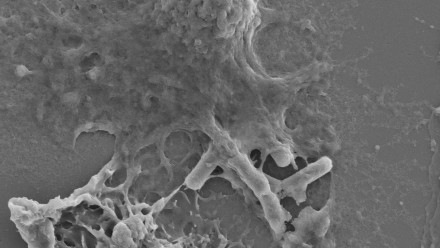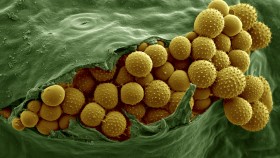Toxin and disease: a cereus business
Food poisoning is a major health burden worldwide. Foodborne bacteria and their toxins can cause damage and trigger inflammation, contributing to diarrhoea and vomiting. Prof. Si Ming Man and his team at the Australian National University (ANU) aretrying to understand how the immune system fights against these disease-causing bacteria.
They identified a toxin, called haemolysin BL, is key to unlock the interplay between bacteria and the immune system. This toxin is produced by the human foodborne bacterium Bacillus cereus (B. cereus) which is found ubiquitously, e.g. in food products, soil, and animals. When ingested, the bacteria and their toxins can cause food poisoning and other serious infections, including sepsis.
Ms Anukriti Mathur, a PhD student in the lab, used scanning electron microscopy at the Microscopy Australia facility at the Australian National University and found that B. cereus attacked an immune cell type called macrophages. Detailed investigation of this process revealed that the toxin sticks to the surface of the macrophage. The researchers further use cryo-transmission electron microscopy available at the ANU facility, and identified membrane pores formed by the toxin. The leaky and weakened cell membrane caused by the pores eventually collapses, killing the macrophage. The research team also demonstrate that the contents released by the dying macrophage alert the rest of the immune system to fight back. The advanced microscopy techniques and expertise available at the Microscopy Australia facility helped the researchers to probe into the complex relationship between toxins and the immune system. The next step for the researchers is to find new ways to disrupt the toxin and neutralise the harmfulness of the bacteria.
Reference:
Mathur, A, Feng, S, Hayward, JA, Ngo, C, Fox, D, Atmosukarto, II,Price, JD, Schauer, K, Märtlbauer, E, Robertson, AAB, Burgio, G, Fox, EM, Leppla, SH, Kaakoush, NO, &Man, SM (2019) A multicomponent toxin from Bacillus cereus incites inflammation and shapes host outcome via the NLRP3 inflammasome. Nature Microbiology. 4:362–374.








